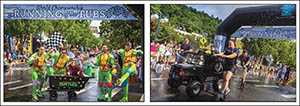The Core Four Practices
Right now, there may be an invisible enemy ready to strike. He’s called BAC (bacteria) and he can make people sick.
In fact, even though consumers can’t see BAC – or smell him, or feel him – he and millions more like him may already be invading food products, kitchen surfaces, knives and other utensils.
But you have the power to Fight BAC!® and to reduce your risk of foodborne illness. It’s as easy as following these core four Fight BAC!® practices for food safety:
Clean, Separate, Cook, Chill. Read on…
By Alison Crane
Before the microscope was invented a few people theorized about invisible organisms causing illnesses, but they had no way to prove it. Today, we know a great deal about microscopic illness-causing germs.
Food safety education has come a long way, but statistics show that one in every six Americans will get sick this year.
Following four simple steps – clean, separate, cook and chill – can help keep your family safe from food poisoning at home.
Illness causing germs can survive in any number of surfaces in your kitchen, including your hands. Keeping things clean is your first line of defense in food safety. Washing our hands the right way and often is an important habit to teach all of your family members. Wash your kitchen surfaces and utensils after each use. Before using, wash all fruits and vegetables (even watermelon), but not meat, poultry or eggs.
The best way to prevent cross-contamination is by keeping food items separate. Use separate cutting boards and plates for produce, meat, poultry, seafood and eggs. In most cases cooked foods should never touch the same surface as raw foods. Even when shopping it is best practice to separate raw items from cooked items and to keep them in separate bags.
Safely cooking foods to the right temperatures will help to kill any bacteria or other germs that can cause illness. Use a food thermometer to make sure cooked food has reached the right internal temperature. A good rule of thumb is to keep hot foods – hot, and cold foods – cold, and avoid the danger zone of 40ºF-140ºF where germs grow best. When reheating foods bring them to 165ºF to ensure any micro-organisms are killed before eating.
Prevent the growth of germs by chilling your foods quickly when you are done with them. Cooked produce, meats or dairy foods should not be left sitting out of the refrigerator or freezer from more than two hours.
Setting foods on the counter to thaw gives bacteria time to grow. Thaw foods in the refrigerator or microwave. Freezing foods doesn’t kill the germs, but it does allow you to safely store it until you can cook it.
These four steps – clean, separate, cook and chill are not difficult to follow and can prevent a trip to the emergency room. If you would like to further test your food safety knowledge visit our website to see if you know the facts from fiction when it comes to foodborne illness: UAEX Food Safety.
For more information, contact the Garland County Extension Service at -501-623-6841, or follow on Facebook Garland County UAEX.

Alison Crane is a Family and Consumer Science Agent with the Garland County Extension Service. The University of Arkansas System Division of Agriculture offers all its Extension and Research programs to all eligible persons without regard to race, color, sex, gender identity, sexual orientation, national origin, religion, age, disability, marital or veteran status, genetic information, or any other legally protected status, and is an Affirmative Action/Equal Opportunity Employer.








